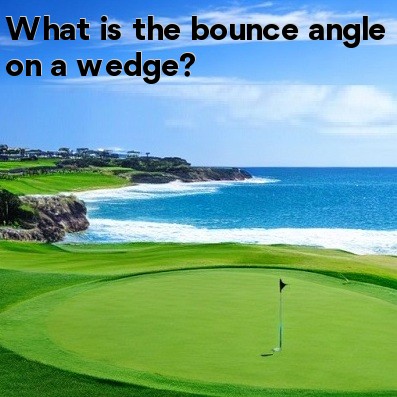
The Bounce Angle on a Wedge
When it comes to golf wedges, one of the key factors that impacts their performance is the bounce angle. The bounce angle refers to the angle between the leading edge of the clubface and the lowest point of the sole when the club is placed on a flat surface.
Understanding the Bounce Angle
The bounce angle plays a crucial role in how the wedge interacts with the turf. It helps prevent the wedge from digging too deep into the ground, especially on softer surfaces, ensuring cleaner contact and more consistent shots.
- Higher Bounce Angle: A higher bounce angle on a wedge, typically 10 degrees or more, is beneficial for players with steeper swing paths or playing in softer conditions. It helps prevent the club from digging into the ground, allowing the leading edge to glide smoothly over the turf. This is especially useful on fluffy sand, deep rough, or wet fairways.
- Lower Bounce Angle: On the other hand, wedges with lower bounce angles, generally less than 10 degrees, are preferred by players with shallower swing paths or those who tend to pick the ball more cleanly. This type of wedge is suitable for firm turf conditions, tight lies, or shots requiring more versatility and precision.
Selecting the Right Bounce Angle
Choosing the appropriate bounce angle for your wedges depends on various factors, including your swing style, course conditions, and personal preferences. Experimenting with different bounce angles can help you determine the one that suits your game the best.
Swing Style: If you have a steep swing, tend to take divots, or struggle with fat shots, a higher bounce angle can be beneficial, as it allows the club to glide through the turf without digging. Conversely, if you have a shallow swing or consistently make clean contact, a lower bounce angle may provide you more control and versatility around the greens.
Course Conditions: Take into account the typical conditions of the courses you play. If you often encounter soft or unpredictable turf, a higher bounce angle can help prevent the wedge from getting stuck in the turf. On the other hand, if you primarily play on firm and fast courses, a lower bounce angle may be suitable to manage tight lies and provide more shot-making options.
Personal Preferences: Ultimately, finding the right bounce angle is also a matter of personal preference. Some golfers may simply feel more confident and comfortable using wedges with a specific bounce angle. It is important to try different wedges, experiment on the practice range, and seek advice from a professional club fitter to determine the best fit for your game.
In Conclusion
The bounce angle on a wedge is a critical aspect that influences how the club interacts with the turf. While higher bounce angles are generally suited for steeper swings and softer conditions, lower bounce angles are preferred for shallow swings and firm turf. Consider your swing style, course conditions, and personal preferences to choose the most suitable bounce angle for your wedges. With the right bounce angle, you can improve your ball-striking consistency, control, and versatility around the greens.





